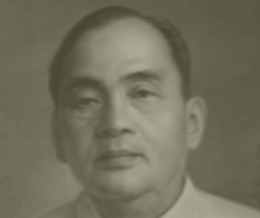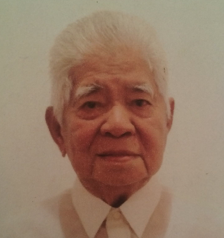PROFILE OF THE PHILIPPINE SOCIETY OF SANITARY ENGINEERS, INC.
The Philippine Society of Sanitary Engineers, Inc. (PSSE) is the only professional organization of Sanitary Engineers in the Philippines accredited by the Professional Regulation Commission by virtue of PRC Board Resolution No. 2009-497 & Certificate of Accreditation No. 26. The PSSE is also the only PRC accredited Continuing Professional Education Provider for Sanitary Engineers.
Before the outbreak of World War II (WWII), a group of enterprising civil engineers with specialized studies in Sanitary Engineering obtained in the United States of America initiated the formation PSSE. Their collective efforts were cut short by WWII.
 At the time, the City of Manila through its Department of Public Service was already practicing hygiene and sanitation with the pioneering efforts of Engr. Emilio L. Ejercito, one of the earliest practitioners of sanitary engineering in the Philippines. During academic year 1943-44, when the Japanese forces allowed a select few colleges of the University of the Philippines (UP) to open, Dr. Reynaldo M. Lesaca was appointed initially as assistant instructor of sanitary engineering under Dr. Hilario Lara, then Dean of the Institute of Hygiene. Dr. Lara then envisioned the establishment of a regular college department after building up the then one-man faculty of sanitary engineering at the Institute. The UP reopened in mid-1945 after the war and mass graduations were held for those who were unable to graduate of the Japanese occupation. Reconstruction and rehabilitation of the war-damaged country then began and one of the first to be rehabilitated was the public water supply and public sanitation services of Manila and surrounding areas. By the early fifties, a consensus emerged among the academicians and civil engineers to recognize sanitary engineering as a separate and highly specialized field encompassing, as it did, biology, sanitary chemistry and water analysis and related water and wastewater treatment against pollution.
At the time, the City of Manila through its Department of Public Service was already practicing hygiene and sanitation with the pioneering efforts of Engr. Emilio L. Ejercito, one of the earliest practitioners of sanitary engineering in the Philippines. During academic year 1943-44, when the Japanese forces allowed a select few colleges of the University of the Philippines (UP) to open, Dr. Reynaldo M. Lesaca was appointed initially as assistant instructor of sanitary engineering under Dr. Hilario Lara, then Dean of the Institute of Hygiene. Dr. Lara then envisioned the establishment of a regular college department after building up the then one-man faculty of sanitary engineering at the Institute. The UP reopened in mid-1945 after the war and mass graduations were held for those who were unable to graduate of the Japanese occupation. Reconstruction and rehabilitation of the war-damaged country then began and one of the first to be rehabilitated was the public water supply and public sanitation services of Manila and surrounding areas. By the early fifties, a consensus emerged among the academicians and civil engineers to recognize sanitary engineering as a separate and highly specialized field encompassing, as it did, biology, sanitary chemistry and water analysis and related water and wastewater treatment against pollution.
 PSSE was revived in 1951 through the pioneering efforts of Don Emilio L. Ejercito, Sr., now acknowledged as the Father of Sanitary Engineering in the Philippines, with the help of Engr. Antonio Menor, Engr. Lamberto Un Ocampo, among others. They worked for the propagation of the formal course, enactment of law establishment of the formal course, enactment of law regulating the practice of the sanitary engineering profession. ). Engr. Antonio Menor, then Metropolitan Water District chief, was elected president. He was succeeded by Engr. Lamberto Un Ocampo and later on by Engr. Emilio L. Ejercito, Sr.
PSSE was revived in 1951 through the pioneering efforts of Don Emilio L. Ejercito, Sr., now acknowledged as the Father of Sanitary Engineering in the Philippines, with the help of Engr. Antonio Menor, Engr. Lamberto Un Ocampo, among others. They worked for the propagation of the formal course, enactment of law establishment of the formal course, enactment of law regulating the practice of the sanitary engineering profession. ). Engr. Antonio Menor, then Metropolitan Water District chief, was elected president. He was succeeded by Engr. Lamberto Un Ocampo and later on by Engr. Emilio L. Ejercito, Sr.
Soon after the election in 1953 of President Ramon Magsaysay, the MWD was reorganized into the National Waterworks and Sewerage, or NAWASA, mainly through the efforts of Engr. Susano R. Negado. Engr. Negado helped draft a law recognizing sanitary engineering (SE) as a separate engineering specialty. In addition, the PSSE lobbied for the passage of Republic Act No. 1364 which was enacted into law of 18 June 1955. Entitled “An Act to Regulate the Practice of SE in the Philippines,” R.A. 1364 defined the scope of the SE practice and the creation of a Board of Examiners, under the then Civil Service Commission, which at that time was attached to the Office of the President.
As embodied in the By-laws of the PSSE as amended on 3 December 2015, and pursuant to Memorandum Circular No. 35 series of 2009, by the Commission on Higher Education, the fields of specialization of a Sanitary Engineer are:
- Environmental Engineering
- Environmental Management
- Public Health Engineering
- Plumbing and Fire Protection
- Solid Waste Management
- Wastewater Engineering
- Water Supply Engineering
As of September 2017, there are a total of 3,265 registered Sanitary Engineers pursuant to RA 1364. There are also 12 schools offering the baccalaureate degree and 2 schools offering masteral course in Sanitary Engineering.
